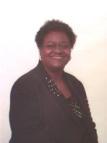|
One hundred six years after it began, the 1906 Azusa Street Revival in Los Angeles California stands as an example of what God can and will do when Christian brethren live the words of Psalm 133:1, “Behold how good and how pleasant it is for brethren to dwell together in unity.” The unity among Christian brethren regardless of race, demonstrated at Azusa Street Mission was a harvest from the seeds sown by the ministry of men and women of God who preached holiness of heart prior to the Civil War. From Francis Asbury to Phoebe Palmer, from Charles G. Finney to A. B. Earle, the Word of God preached concerning holiness of heart produced a harvest of interracial worship after the Civil War that became characteristic of the post-Civil War Holiness movement.
It was within this interracial Christian fellowship that the intercessory prayer wheel turned in 1905, seeking an outpouring of the Holy Ghost. That prayer was answered on April 9, 1906 by the outbreak of a revival that lasted until 1909. This revival, during which Christians were baptized in the Holy Ghost evidenced by speaking in tongues, was also characterized by the absence racial prejudice. The message preached was love and there was unity among Christian brethren.
Several persons, who journeyed to Azusa Street Mission seeking Holy Ghost baptism, experienced a change of heart regarding racial prejudices. One such person was a North Carolinian from Dunn named Gaston Barnabas Cashwell. After encountering an environment that was contrary to the racial customs of the South that he was used to, Brother Cashwell was placed in a position of making a choice between holding on to the ways of the South and receiving what God had for him through Holy Ghost baptism. Brother Cashwell chose to relinquish those Southern ways and receive what God had for him.
As a result, God honored Brother Cashwell’s faith by not only baptizing him in the Holy Ghost, but also using him to spread the Word of God in the South concerning Holy Ghost baptism and manifest the power of God in his ministry to the point that Brother Cashwell became known as the Apostle of Pentecost of the South. Throughout his life and ministry, Brother Cashwell kept the faith, not only by spreading the Word of God concerning Holy Ghost baptism, but also by maintaining the fellowship of his African-American Christian brothers who he met at Azusa Street Mission.
For his continued faithfulness, God is still honoring Brother Cashwell today, evidenced by this gathering, for this most distinguished purpose. May all who read his marker, learn of Brother Cashwell’s testimony and come to understand what God can and will do when Christian brethren dwell together in unity.
|

